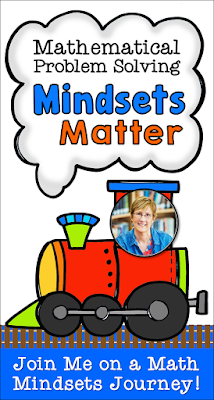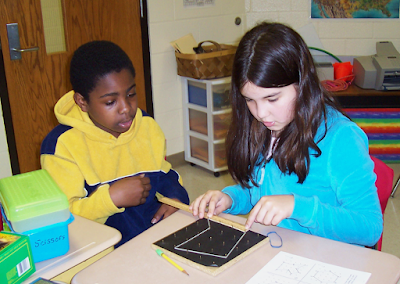Mathematical Problem Solving: Mindsets Matter

Do you love math? Or are you convinced that the math train left the station without you long ago? No matter how you feel about it, if you’re an elementary educator, you’ll probably have to teach math at some point. Fortunately, growth mindset research and new findings about how the brain works are leading to some amazing insights about the best way to teach math. Furthermore, these insights are making it possible to foster a love of math in ALL students!
Last year I discovered Dr. Jo Boaler’s book, Mathematical Mindsets, and I was fascinated by the research findings she shared. I also loved Dr. Boaler’s strategies for using those research findings to improve math instruction. I know that problem solving is essential in mathematics, and most of the strategies I was using are supported by the new research. However, I did discover that a few of my teaching methods are not actually best practices, so I’ve been reworking those strategies to incorporate what I’ve learned.
A few years ago I presented a webinar called Math Problem Solving: Once a Day, the Easy Way, but after reading Mathematical Mindsets, I knew it was time to update that presentation with these new research-based practices. I asked Dr. Boaler for permission to include information and strategies from her book in my webinar, and she graciously agreed.
My new webinar, Math Problem Solving: Mindsets Matter, focuses on growth mindset research and its implications for math instruction. Interested? Download the webinar note-taking handouts and watch the replay .
Best Practices in Math Instruction: Agree or Disagree?
At the beginning of the webinar, I’ll ask you to evaluate 6 commonly-held beliefs about math instruction, and then I’ll share what the research tells us about them. What do you think about each statement below? Do you agree or disagree with these beliefs about math instruction?
- Problem solving strategies should be taught before giving students problems to solve.
- Drawing solutions and counting on fingers should only be encouraged for young children and struggling students.
- Students should only use calculators in math after they can perform the computations by hand.
- Mistakes are only beneficial when we learn from them.
- Some people were born with a gift for math, and others weren’t.
- The best way to meet the needs of all students is through ability grouping and differentiation.
If you want to know what the research says about these beliefs, watch the webinar replay! I dug into the best practices related to each of those statements about math instruction.
From Word Problems to Rich Math Tasks
One research finding about how to foster a mathematical mindset is pretty clear. Instead of overloading kids with traditional “word problems,” we need to engage them in more in rich math tasks. In the webinar, I went into detail about what that means, but basically a rich math task encourages students to think about math in new ways, finding multiple ways to solve problems, and to discuss their findings with others. Fortunately, it’s quite easy to find rich math tasks if you know where to look, and you can also turn traditional word problems into rich math task. Check out the webinar replay for tips about how find or create rich math tasks that are appropriate for your students.
Join Me for a Math Mindsets Webinar Journey!
I’m still learning about how to foster a mathematical mindset, so I consider this webinar to be more of a journey we’ll take together. You can board the Math Problem Solving: Mindsets Matter webinar train here; tickets are FREE, so hop on and take a seat now!
I’ll be your conductor if you decide to take this journey with me, and I’ll share what I’ve learned about growth mindset and math instruction. We’ll wrap up our adventure by exploring painless problem solving strategies you can implement right away that will motivate your students to love math, even if you don’t! Who knows? By the end of our journey, you might be a math lover, too!









